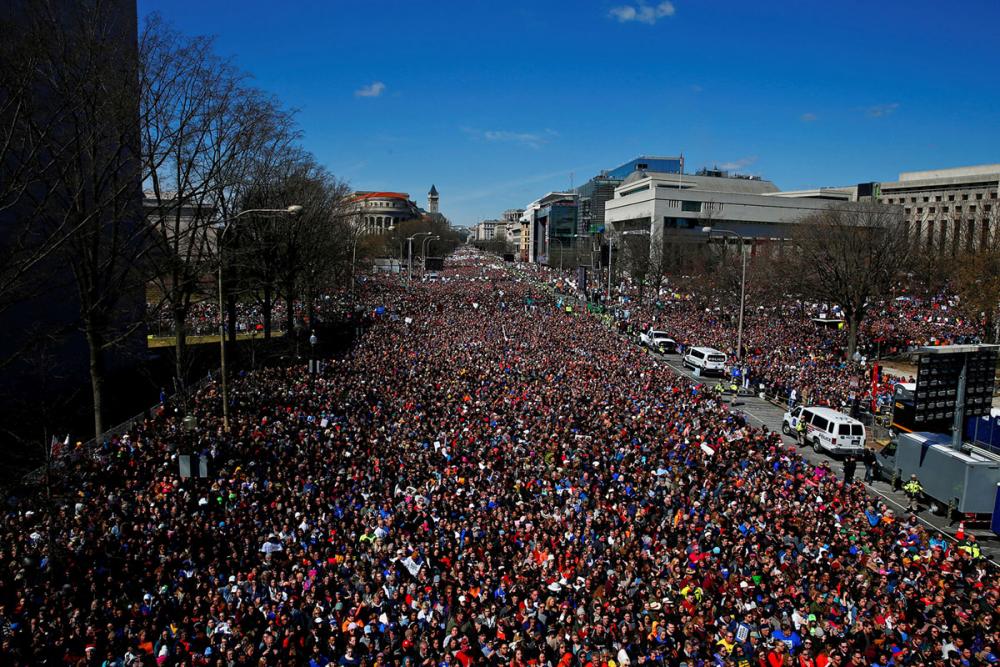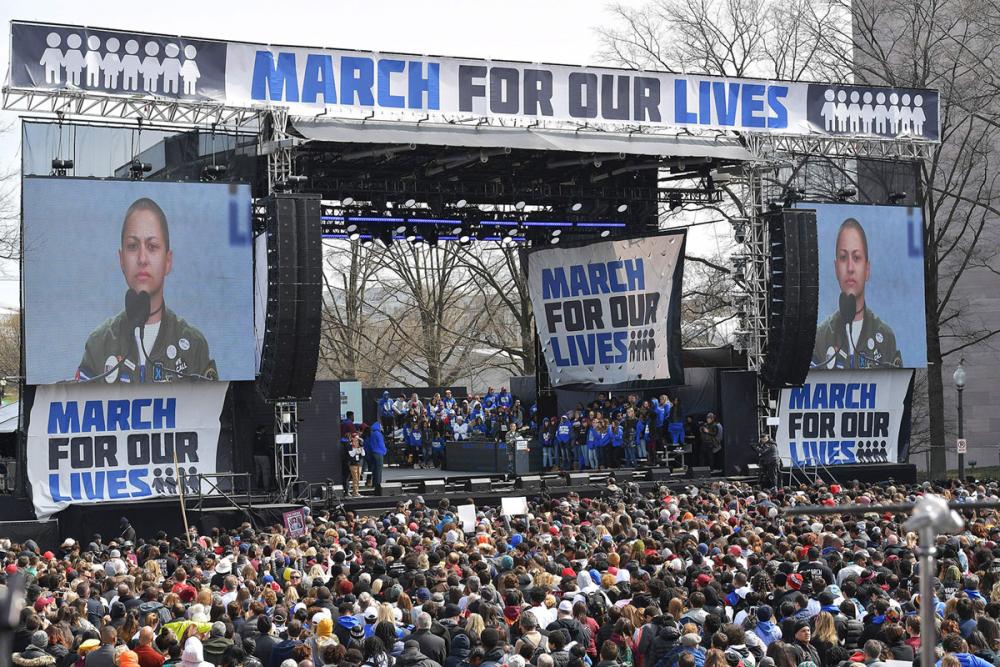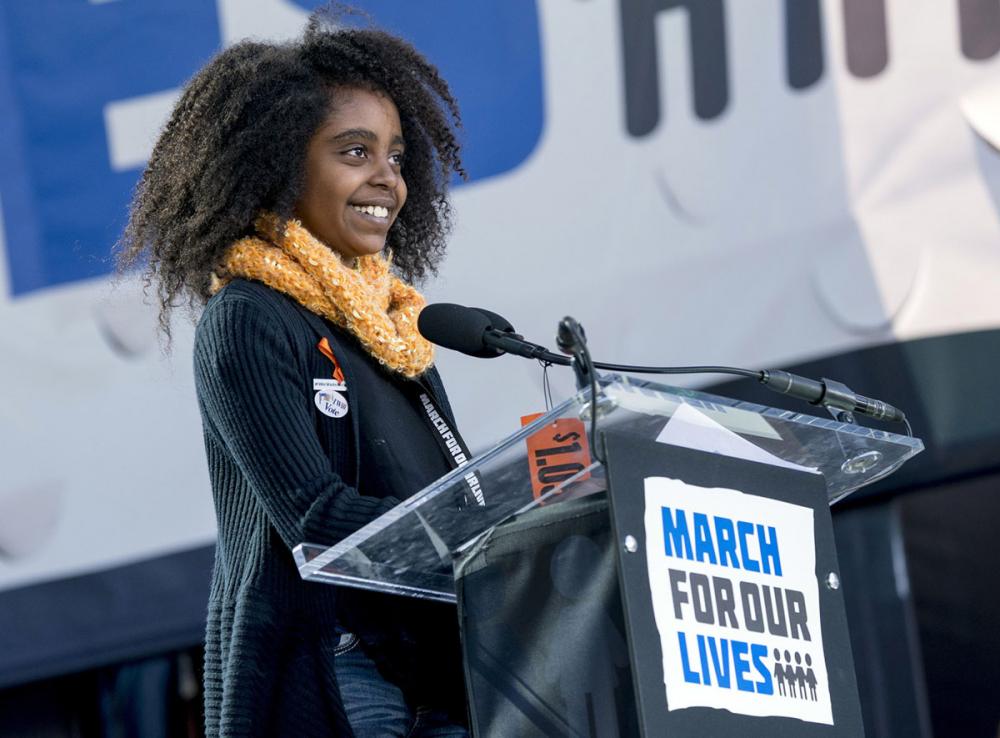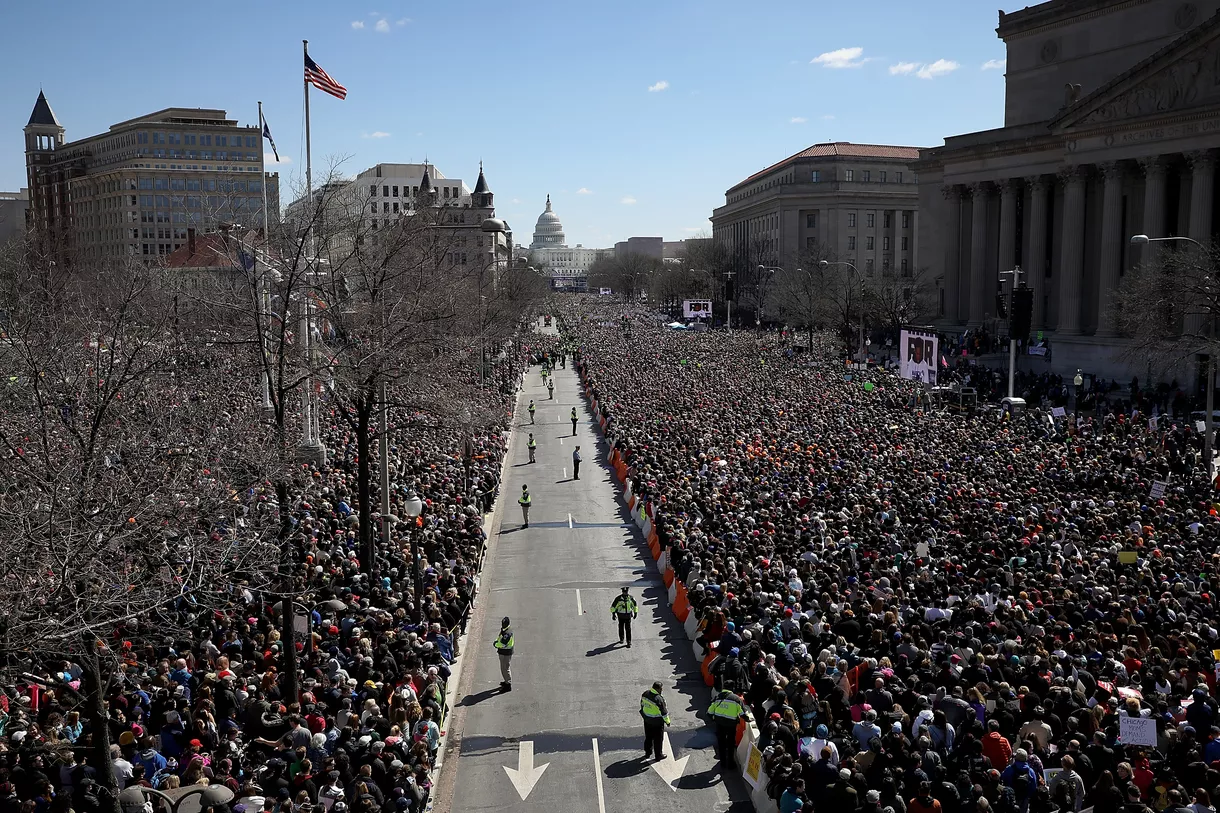What Gives Me Hope About This 'Enough Is Enough' Movement

I experienced the new youth movement following the Parkland massacre vicariously: through television, radio, and social media. I stayed at home Saturday March 24 periodically sampling the television accounts of the massive rallies all over the country and the world against guns, gun violence, and the gun manufacturers and their lobbyists who prey on the celebration of fear and violence. I even shed a tear when I saw one placard with the sign “teach your parents well.”
While I have had bursts of enthusiasm before when women marched for their rights, masses mobilized against war, and many stepped up to say no to police violence and mass incarceration, I was touched emotionally even more this time around. On reflection, I think, my optimism, my interest in being involved, and my sense of purpose has been energized by several features of this new movement.
First, this movement was not organized around “identities.” While the student organizers of the rally purposefully incorporated how people of color, women, and lower income students experience violence differently in their lives, the central focus was on the general issues of guns and gun violence. Individual youth organizers then spoke from their own experiences.
Second, the students, again consciously, avoided all sectarianisms. While there were clear messages about profit-making corporations, lobby groups, self-serving elected officials, and the uses to which elections were put, they did not explicitly address the role of capitalism and class, race, and gender. They made it clear that elections matter. They avoided the debate about whether people should support one or the other of the major political parties or build a third party. They had organized in 800 cities and towns to say “Enough is Enough” about gun violence, not to raise issues of theory and practice that often divide older activists.

credit: Eric Thayer / Reuters // BuzzFeedNews
Third, the students had a direct, immediate issue-oriented agenda; that is the regulation of the ownership, sale, and use of firearms in society. Although spokespersons from Parkland and elsewhere beautifully grounded their advocacy in broader systemic, structural arguments about why they are mobilizing, they presented a modest but significant set of policy goals that they wished to achieve.
Fourth, the young people who organized the marches and rallies presented a practical plan to achieve their immediate goals. They urged those who were old enough to vote, to do so in the 2018 elections. Those who were going to become of voting age, they proposed, should register to vote. And all young people should encourage others to register and vote.
Fifth, all young people were urged to participate in the electoral arena. Activists called on youth to establish litmus tests for each candidate from local to national office on gun issues. And, where possible, participants in rallies were urged to run for office. And young people were advised to reject the argument that “you are just a kid….you don’t have the experience or knowledge to hold public office.”
Sixth, all the emerging youth spokespersons from Parkland, Chicago, Los Angeles, and elsewhere made it clear that they were not leaders in the traditional sense but facilitators of an organically charged mass movement. All students from Parkland who were interviewed indicated that they were not speaking for and about themselves. They saw themselves as part of a generation that is demanding the right to be free of the threat of being a target of violent death.

credit: Mandel Ngan / AFP / Getty // The Atlantic

credit: Andrew Harnik / AP // The Atlantic
Seventh, spokespersons for this mass mobilization promise that “this is just the beginning.” One gets the sense from the passion, the collective solidarity, the proposed plan of action, and the specific goals articulated all across the country that a new movement has been born. This movement might transform itself from its singular commitment to controlling gun violence to a broad-based social movement for justice and democracy.
These “generation Zers” will continue to build from their extraordinary uprising. For now they have set themselves and the nation on a new path that should give us hope and direction. By their actions so far, they have begun to “Teach Your Parents Well.”
[Harry Targ blogs at Diary of a Heartland Radical . He is a Professor of Political Science and is Co-Chair Committees of Correspondence for Democracy and Socialism (CCDS).]
Thanks to the author for sending this to Portside.

credit - Win McNamee/Getty Images // Vox
It’s official: March for Our Lives was one of the biggest youth protests since the Vietnam War
The preliminary crowd counts confirm the weekend’s marches and rallies were huge.
By German Lopez
March 26, 2018
Vox
At least 1.2 million people marched for gun control over the weekend at events across the US, according to early tallies from researchers Erica Chenoweth and Jeremy Pressman.
The count is still preliminary: The researchers estimate that there were more than 450 marches in the US over the weekend but only have crowd estimates for about half of them.
There’s also a lot of uncertainty with individual marches. The biggest march — in Washington, DC — drew anywhere from 200,000 to 800,000 people, depending on whether you believe the low-end number put out by the private firm Digital Design & Imaging Service or the high-end number from march organizers.
The higher estimate would make the March for Our Lives “the largest single-day protest in the history of the nation’s capital,” according to USA Today. But Digital Design & Imaging Service estimates that the March for Our Lives was in fact smaller than the first Women’s March in 2017, which by its count drew 440,000 to DC.
Regardless, March for Our Lives was one of the biggest rallies for gun control ever in the nation’s capital (at least since the Million Mom March in 2000) — and one of the biggest youth protests since the Vietnam War, according to the Associated Press.
Other March for Our Lives protests around the country drew anywhere from dozens to nearly 200,000 people over the weekend, based on Chenoweth and Pressman’s tally so far. The researchers are asking for people to submit more data to them to get a better count.
The March for Our Lives is a direct response to the Marjory Stoneman Douglas High School shooting in Parkland, Florida, which killed 17. The massacre inspired student survivors to launch a movement in hopes of convincing lawmakers to address the issue of gun violence and, in particular, school shootings.
The protesters plan to continue growing their movement, persuading people to register to vote and attend town halls. In invigorating people to act solely on the issue of gun control, the movement really could make a difference — and potentially push Congress to finally pass significant gun reforms after years of little to no action.
Read more here.
